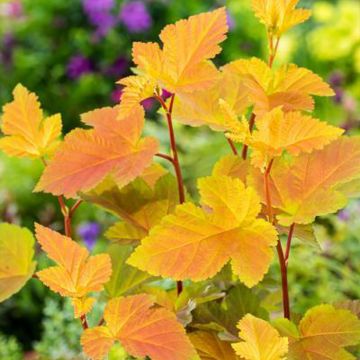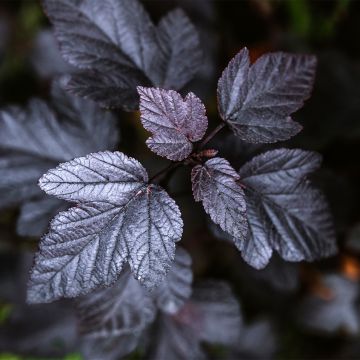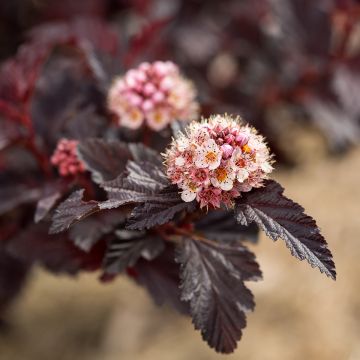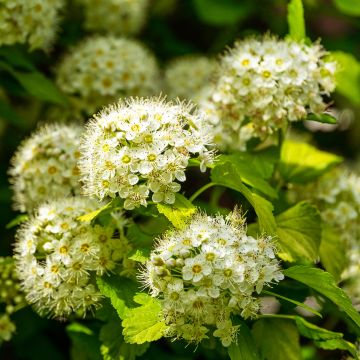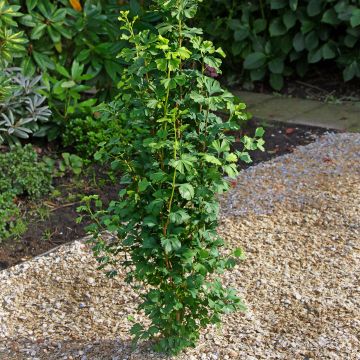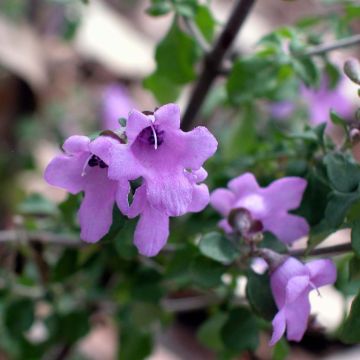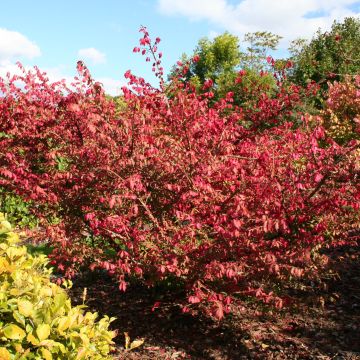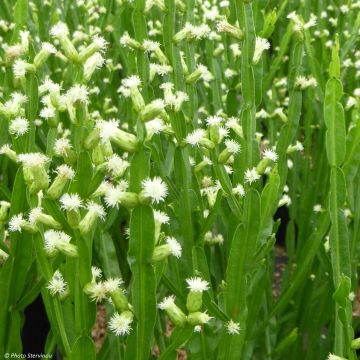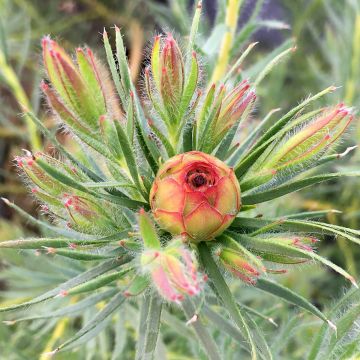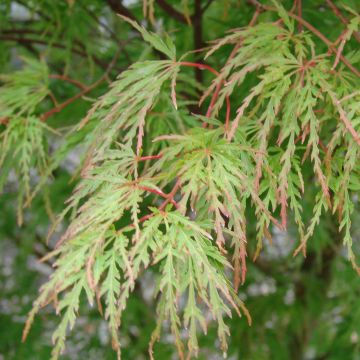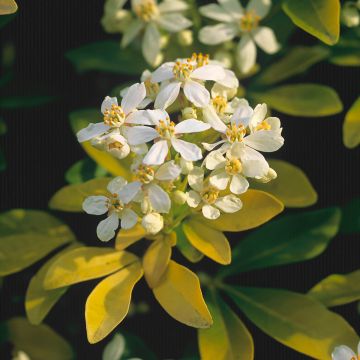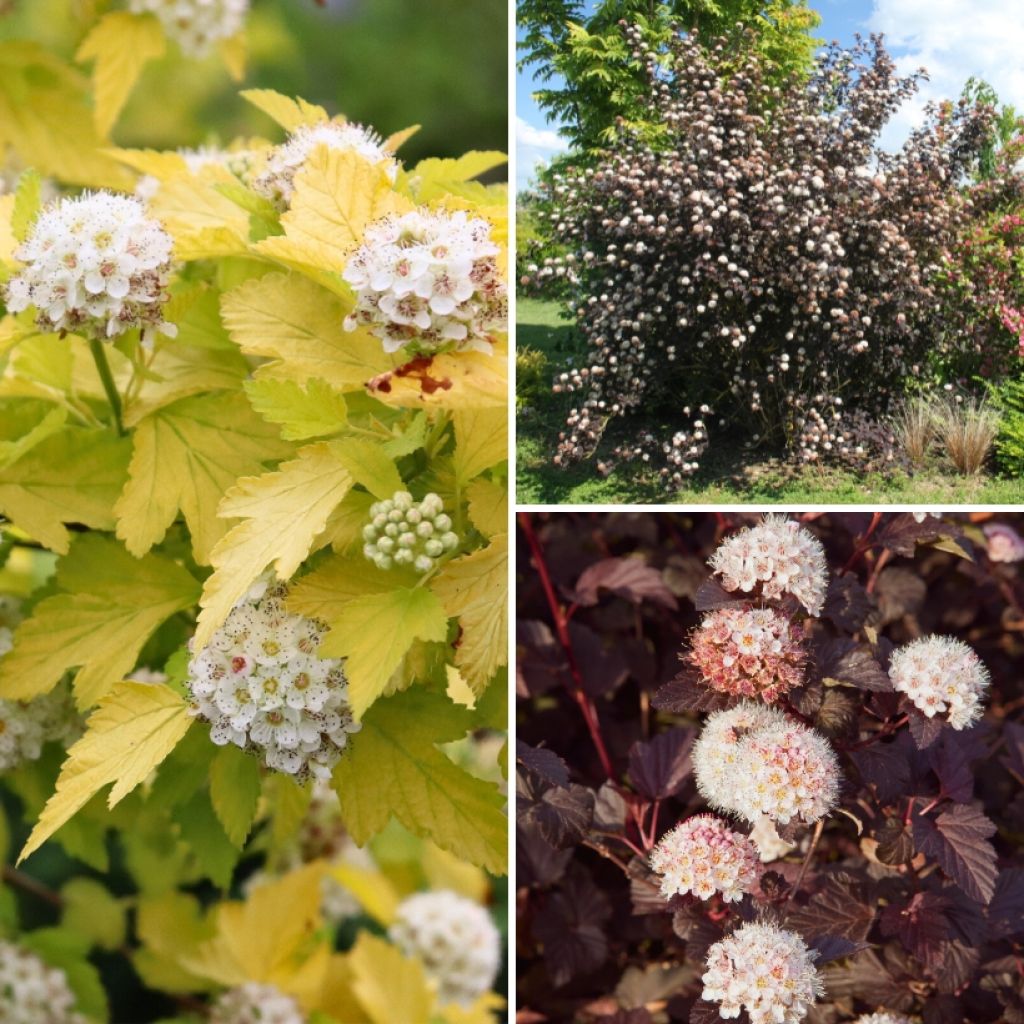

Ninebark Colourful Foliage Collection - Physocarpus
Ninebark Colourful Foliage Collection - Physocarpus
Physocarpus opulifolius Dart s Gold, Lady in Red, Diabolo
Ninebark
This item cannot be shipped to the selected country
Delivery charge from €5.90
More information
Schedule delivery date,
and select date in basket
This plant carries a 24 months recovery warranty
More information
We guarantee the quality of our plants for a full growing cycle, and will replace at our expense any plant that fails to recover under normal climatic and planting conditions.
From €5.90 for pickup delivery and €6.90 for home delivery
Express home delivery from €8.90.
Does this plant fit my garden?
Set up your Plantfit profile →
Collection items (3 plants)
Description
This is a Physocarpus collection, a trio of deciduous shrubs with colourful foliage. These varieties offer a range of colours from golden yellow to vibrant red, to dark purple almost black. Their delicate flowers, in small white or pink clusters, appear in early summer. These easy to grow, hardy plants tolerate most soils, in full sun or partial shade. Plant them in a small hedge or a shrub border.
Collection details
1 Physocarpus opulifolius 'Dart's Gold': reaches about 2m in height and 1.5m in width. Its golden yellow foliage illuminates shaded gardens from April to October. White flowering in early summer, usually in June.
1 Physocarpus opulifolius 'Lady in Red': height of 1.50m and width of 1m. Foliage in two shades of red (juvenile foliage evolving from coppery red to satiny purple), white-pink flowers. Ideal for colour contrasts.
1 Physocarpus opulifolius 'Diabolo': up to 2m in height and 1.5m in width. Dark purple foliage, turning coppery orange and red in autumn, white to pink flowers.
Physocarpus should be planted in spring or autumn. In borders, plant 'Dart's Gold' and 'Lady in Red' in the foreground to enjoy their decorative foliage, and place 'Diabolo' in the background. Maintain a distance of 80cm to 1m between each plant and plant approximately 2 to 3 plants per m² for a quick and dense effect in the border.
To create a border composed of the Physocarpus collection, place 3 plants of Miscanthus sinensis 'Gracillimus' in the background, their tall inflorescences will highlight the roundness of the shrubs. In front of the Physocarpus, plant 5 plants of Heuchera 'Forever Purple', their purple foliage and delicate pink flowering will create a beautiful border effect. To perfect the scene, integrate 7 plants of Alchemilla mollis between the heucheras. Their tender green leaves and chartreuse yellow flowers will bring a bright and delicate touch to the front of the border.
To create a small hedge, plant 3 Hydrangea paniculata 'Limelight' between the Physocarpus. Their large white and pink inflorescences in summer perfectly complement the colourful foliage. In the border, plant 7 Geranium 'Rozanne'.
Report an error about the product description
Plant habit
Flowering
Foliage
Botanical data
Physocarpus
opulifolius
Dart s Gold, Lady in Red, Diabolo
Rosaceae
Ninebark
Cultivar or hybrid
Other Physocarpus
Planting and care
Plant Physocarpus in deep, humus-bearing, rich and moist soil, neutral to acidic (they don't like calcareous and dry soils in summer). Avoid letting the soil dry out in summer and shower the foliage during heatwaves. This bush will thrive in partial shade or full sun, but the foliage colours will be more pronounced if planted in a sunny location. Thin out overly dense plants and prune back some of the arching stems after flowering. This can promote the emergence of new flower buds in late summer. Physocarpus tends to produce many suckers, to the detriment of the main plant; it may be helpful to prune it back severely in late winter to give it a denser appearance.
Planting period
Intended location
Care
This item has not been reviewed yet - be the first to leave a review about it.
Striking foliage shrubs
Haven't found what you were looking for?
Hardiness is the lowest winter temperature a plant can endure without suffering serious damage or even dying. However, hardiness is affected by location (a sheltered area, such as a patio), protection (winter cover) and soil type (hardiness is improved by well-drained soil).

Photo Sharing Terms & Conditions
In order to encourage gardeners to interact and share their experiences, Promesse de fleurs offers various media enabling content to be uploaded onto its Site - in particular via the ‘Photo sharing’ module.
The User agrees to refrain from:
- Posting any content that is illegal, prejudicial, insulting, racist, inciteful to hatred, revisionist, contrary to public decency, that infringes on privacy or on the privacy rights of third parties, in particular the publicity rights of persons and goods, intellectual property rights, or the right to privacy.
- Submitting content on behalf of a third party;
- Impersonate the identity of a third party and/or publish any personal information about a third party;
In general, the User undertakes to refrain from any unethical behaviour.
All Content (in particular text, comments, files, images, photos, videos, creative works, etc.), which may be subject to property or intellectual property rights, image or other private rights, shall remain the property of the User, subject to the limited rights granted by the terms of the licence granted by Promesse de fleurs as stated below. Users are at liberty to publish or not to publish such Content on the Site, notably via the ‘Photo Sharing’ facility, and accept that this Content shall be made public and freely accessible, notably on the Internet.
Users further acknowledge, undertake to have ,and guarantee that they hold all necessary rights and permissions to publish such material on the Site, in particular with regard to the legislation in force pertaining to any privacy, property, intellectual property, image, or contractual rights, or rights of any other nature. By publishing such Content on the Site, Users acknowledge accepting full liability as publishers of the Content within the meaning of the law, and grant Promesse de fleurs, free of charge, an inclusive, worldwide licence for the said Content for the entire duration of its publication, including all reproduction, representation, up/downloading, displaying, performing, transmission, and storage rights.
Users also grant permission for their name to be linked to the Content and accept that this link may not always be made available.
By engaging in posting material, Users consent to their Content becoming automatically accessible on the Internet, in particular on other sites and/or blogs and/or web pages of the Promesse de fleurs site, including in particular social pages and the Promesse de fleurs catalogue.
Users may secure the removal of entrusted content free of charge by issuing a simple request via our contact form.
The flowering period indicated on our website applies to countries and regions located in USDA zone 8 (France, the United Kingdom, Ireland, the Netherlands, etc.)
It will vary according to where you live:
- In zones 9 to 10 (Italy, Spain, Greece, etc.), flowering will occur about 2 to 4 weeks earlier.
- In zones 6 to 7 (Germany, Poland, Slovenia, and lower mountainous regions), flowering will be delayed by 2 to 3 weeks.
- In zone 5 (Central Europe, Scandinavia), blooming will be delayed by 3 to 5 weeks.
In temperate climates, pruning of spring-flowering shrubs (forsythia, spireas, etc.) should be done just after flowering.
Pruning of summer-flowering shrubs (Indian Lilac, Perovskia, etc.) can be done in winter or spring.
In cold regions as well as with frost-sensitive plants, avoid pruning too early when severe frosts may still occur.
The planting period indicated on our website applies to countries and regions located in USDA zone 8 (France, United Kingdom, Ireland, Netherlands).
It will vary according to where you live:
- In Mediterranean zones (Marseille, Madrid, Milan, etc.), autumn and winter are the best planting periods.
- In continental zones (Strasbourg, Munich, Vienna, etc.), delay planting by 2 to 3 weeks in spring and bring it forward by 2 to 4 weeks in autumn.
- In mountainous regions (the Alps, Pyrenees, Carpathians, etc.), it is best to plant in late spring (May-June) or late summer (August-September).
The harvesting period indicated on our website applies to countries and regions in USDA zone 8 (France, England, Ireland, the Netherlands).
In colder areas (Scandinavia, Poland, Austria...) fruit and vegetable harvests are likely to be delayed by 3-4 weeks.
In warmer areas (Italy, Spain, Greece, etc.), harvesting will probably take place earlier, depending on weather conditions.
The sowing periods indicated on our website apply to countries and regions within USDA Zone 8 (France, UK, Ireland, Netherlands).
In colder areas (Scandinavia, Poland, Austria...), delay any outdoor sowing by 3-4 weeks, or sow under glass.
In warmer climes (Italy, Spain, Greece, etc.), bring outdoor sowing forward by a few weeks.





































